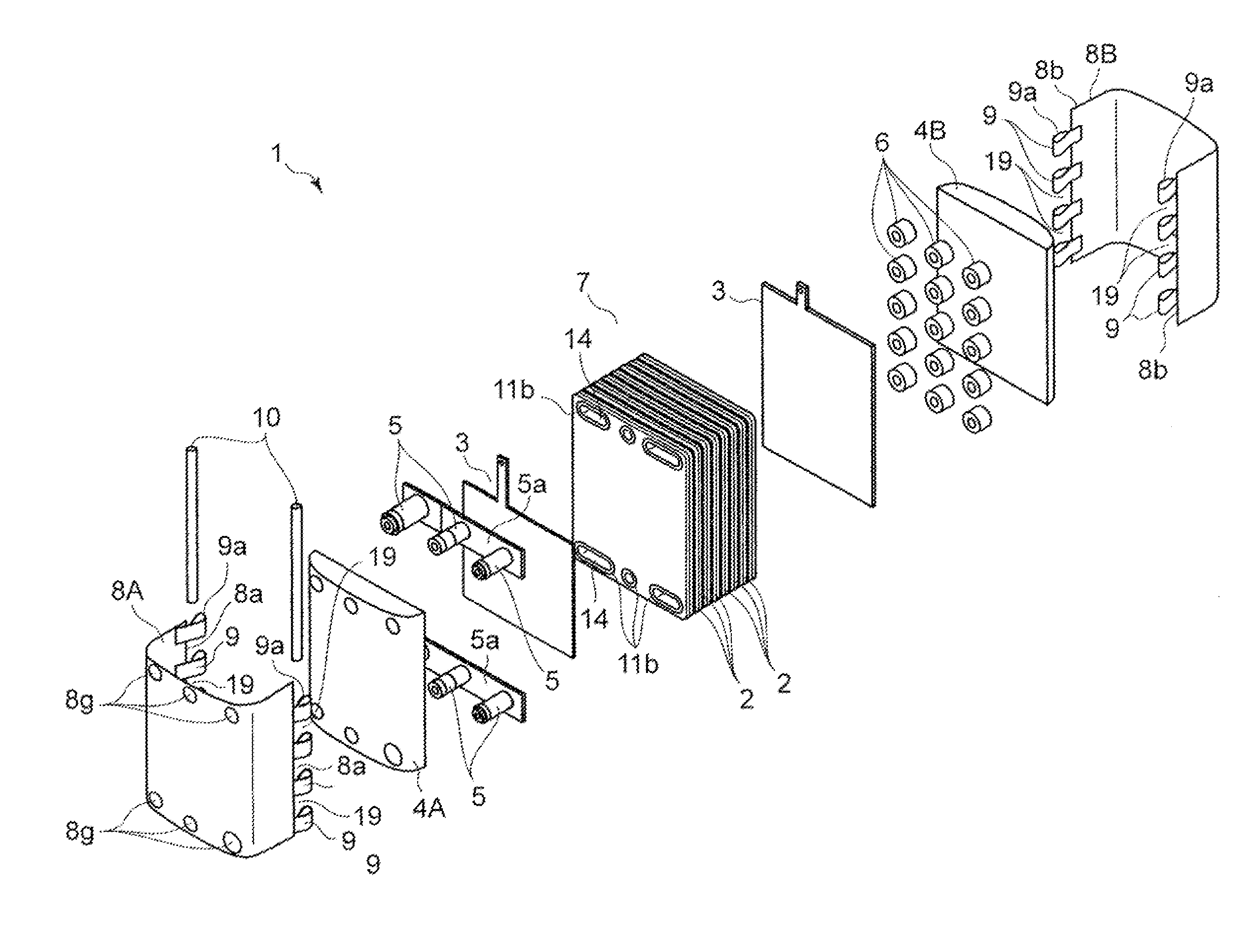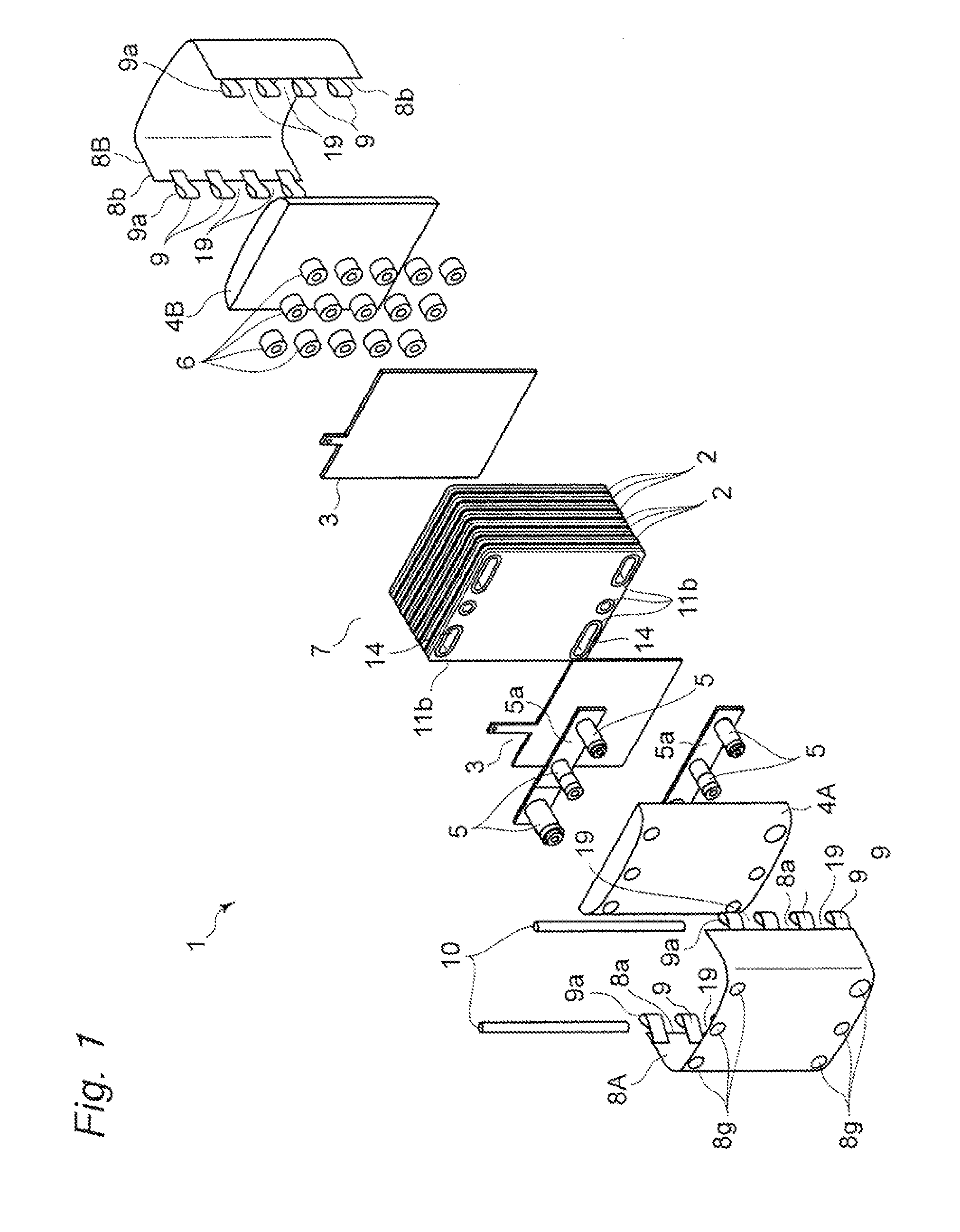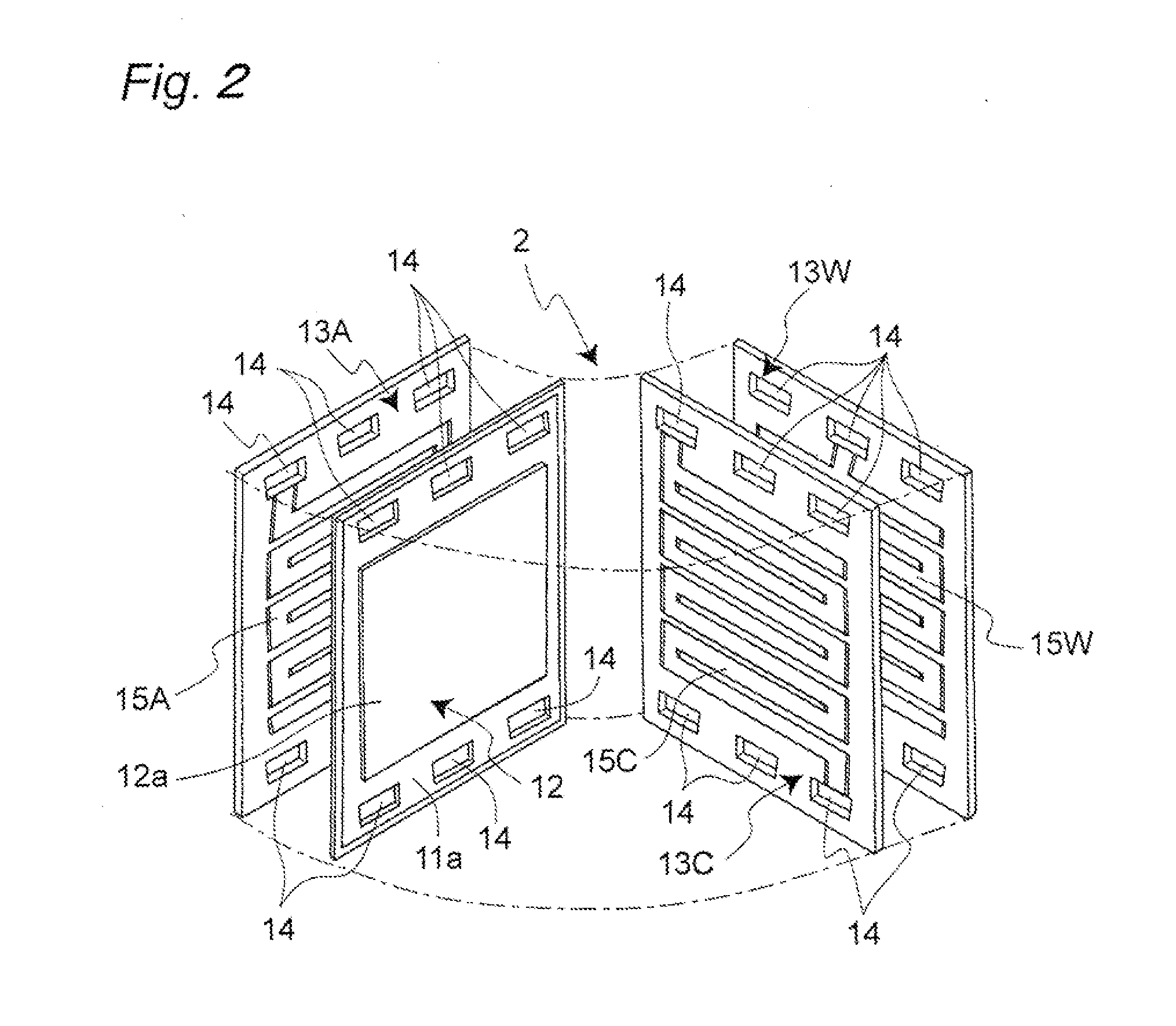Polymer electrolyte fuel cell stack
a polymer electrolyte and fuel cell technology, applied in the direction of solid electrolyte fuel cells, fuel cells, fuel cell grouping, etc., can solve the problems of increasing the volume of the stack, excessive or insufficient fastening load, and increasing the thickness of the stack, so as to achieve easy simple structure, and easy change and adjustment of fastening load
- Summary
- Abstract
- Description
- Claims
- Application Information
AI Technical Summary
Benefits of technology
Problems solved by technology
Method used
Image
Examples
first working example
[0077]FIGS. 3A and 3B show cross-sectional plan views of fuel cell stacks 1 according to a first working example of the present embodiment and according to a variation example thereof, respectively. Current collecting plates 3 are disposed at the top and bottom surfaces of a cell-stacked product 7, respectively. Pipes 5 are disposed near one of the current collecting plates 3 on the bottom side of the cell-stacked product 7 and held by an end plate 4A. On the other one of the current collecting plates 3 on the top side, a multitude of internal springs 6 are disposed. Thus, such components are sandwiched between the top and bottom end plates 4A and 4B. The entire fastening target members are covered by two bands 8A and 8B which have band body portions 8c and 8d, respectively, which are as wide as the cell 2. As one example, fastening is established by the bands 8A and 8B being coupled by two pins 10. When the assembly is completed with the bands 8A and 8B and the pins 10, a multitude...
second example
[0106]The cross-section of each pin 10 is not limited to circular as in the first working example, and may be in any shape. In the following, a description will be given of shapes except for circular. For example, (1) in FIG. 8 is a cross-sectional plan view, which is identical to (1) in FIG. 6 for the purpose of comparison, showing a state where the coupling portions 9 are coupled using the pin 10A having a circular cross-sectional shape according to the first working example.
[0107]In contrast, (2) in FIG. 8 shows an enlarged cross-sectional plan view of the coupling portions 9 of the bands 8 and a pin 10E according to the second working example. As the pin 10E used herein, a rod whose cross section taken perpendicularly to its longitudinal direction is oval is used. In the second working example, the pin 10E whose cross section is oval, in which the long axis direction is twice as long as the short axis direction, is used. As to the fastening load, the fastening load with an extra...
third example
[0109](4) in FIG. 8 shows an enlarged cross-sectional plan view around the coupling portions 9 of the bands 8 according to the third working example of the embodiment. Employing a plurality of pins 10G of the same type for fastening the coupling portions 9 of the bands 8, the fastening load can be adjusted. According to the third working example, when the thickness of the cell-stacked product 7 is thin, the pins 10G can be inserted into one coupling section of the coupling portions 9 and the coupling portions 9. That is, two pins 10G can be inserted into one through hole 9a formed of the coupling portions 9, so as to adjust the fastening load addressing the thickness variations of the cell-stacked product 7 by a length of the diameter of the pin 10G. This is effective in being capable of completing the stack assembly without incurring an increase in the volume of the stack 3 or requiring preparation of the pins 10 differing from one another in diameter and cross-sectional shape. Sin...
PUM
| Property | Measurement | Unit |
|---|---|---|
| thickness | aaaaa | aaaaa |
| diameter | aaaaa | aaaaa |
| diameter | aaaaa | aaaaa |
Abstract
Description
Claims
Application Information
 Login to View More
Login to View More - R&D
- Intellectual Property
- Life Sciences
- Materials
- Tech Scout
- Unparalleled Data Quality
- Higher Quality Content
- 60% Fewer Hallucinations
Browse by: Latest US Patents, China's latest patents, Technical Efficacy Thesaurus, Application Domain, Technology Topic, Popular Technical Reports.
© 2025 PatSnap. All rights reserved.Legal|Privacy policy|Modern Slavery Act Transparency Statement|Sitemap|About US| Contact US: help@patsnap.com



